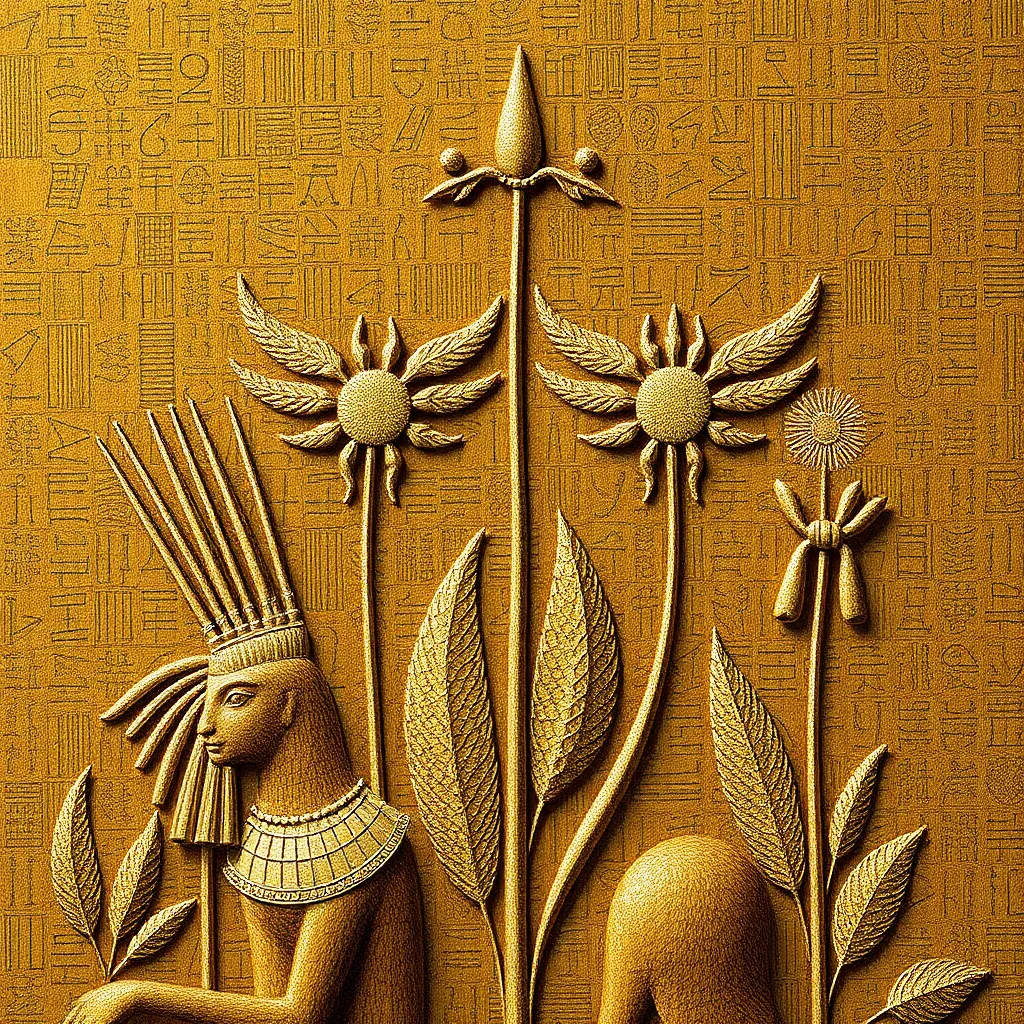The Importance of Sacred Plants in Egyptian Medicine
I. Introduction
Ancient Egyptian medicine is a fascinating blend of science, spirituality, and the natural world. This rich tapestry of healing practices reflects the Egyptians’ profound respect for the environment, particularly sacred plants that held significant roles in their medicinal practices.
Sacred plants were more than just remedies; they were integral to the Egyptians’ understanding of health and disease. This article aims to explore the importance of these plants within the framework of ancient Egyptian medicine, their historical context, and their lasting legacy.
II. Historical Context of Egyptian Medicine
The practice of medicine in ancient Egypt was deeply intertwined with religion and spirituality. Healers, often priests, utilized a combination of rituals, spells, and herbal remedies to treat ailments, believing that health was a divine gift.
Natural remedies were integrated into their healing practices, emphasizing the connection between the physical and spiritual realms. Key figures, such as Imhotep, known as the god of medicine, and various physicians documented their knowledge on papyrus scrolls, laying the groundwork for future medical practices.
III. Sacred Plants in Egyptian Culture
Sacred plants were revered in Egyptian culture for their medicinal properties and symbolic meanings. These plants were often associated with deities and were believed to possess divine qualities.
A. Definition and significance of sacred plants
Sacred plants were those that held religious significance and were commonly used in rituals and healing. They were seen as gifts from the gods, embodying life, fertility, and health.
B. Common sacred plants used in medicine
- Papyrus: Used for its anti-inflammatory properties and as a source of paper.
- Lotus: Symbolized rebirth and was used for its calming effects and to treat various ailments.
- Willow: Known for its pain-relieving properties, particularly in headaches and fevers.
- Frankincense: Valued for its antiseptic qualities and used in rituals for purification.
IV. Medicinal Properties of Sacred Plants
The pharmacological benefits of sacred plants were well recognized in ancient Egypt. Many of these plants contained compounds that are still relevant in modern medicine.
A. Pharmacological benefits
For instance, willow bark contains salicin, a precursor to aspirin, showcasing the Egyptians’ advanced understanding of natural compounds.
B. Historical documentation of plant usage
Medical papyri, such as the Ebers Papyrus, detail the uses of various plants, providing insights into their healing properties and applications.
C. Comparison with modern medicinal practices
Today, many of these ancient remedies continue to influence herbal medicine, demonstrating the timelessness of the Egyptians’ knowledge.
V. Ritual and Spiritual Use of Sacred Plants
Sacred plants were not only used for physical healing but also played a crucial role in spiritual and religious practices.
A. Plants in religious ceremonies
Plants such as the lotus and papyrus were often used in ceremonies to honor the gods, symbolizing purity and renewal.
B. Symbolism and purification
Many sacred plants were associated with rituals of purification, where their smoke or extracts were believed to cleanse both the body and spirit.
C. Connection between healing and spirituality
This interplay between healing and spirituality highlights the Egyptians’ holistic approach to health, where physical ailments were often viewed as manifestations of spiritual discord.
VI. The Role of Sacred Plants in Daily Life
Sacred plants were integral to the daily lives of ancient Egyptians, serving various practical and nutritional purposes.
A. Use in everyday remedies
Common ailments were treated with herbal remedies, showcasing the Egyptians’ reliance on the natural world for health.
B. Impact on diet and nutrition
Many sacred plants were also part of the Egyptian diet, contributing to overall health and well-being.
C. Cultural practices surrounding plant use
Rituals and customs often revolved around the planting, harvesting, and utilization of these sacred plants, reflecting their importance in Egyptian society.
VII. Legacy of Sacred Plants in Modern Medicine
The knowledge of sacred plants in ancient Egypt has left a lasting legacy that continues to influence modern medicine.
A. Continuation of ancient practices
Many herbal practices rooted in ancient Egyptian medicine are still employed today, particularly in alternative and holistic health approaches.
B. Influence on contemporary herbal medicine
Current herbalists and practitioners draw upon ancient texts and traditions, recognizing the value of these time-tested remedies.
C. Preservation and study of ancient knowledge
Efforts to preserve and study ancient Egyptian medicinal practices have gained momentum, highlighting the importance of this knowledge in understanding human health.
VIII. Conclusion
In conclusion, the importance of sacred plants in ancient Egyptian medicine cannot be overstated. They served as vital components of healing practices, deeply intertwined with the culture and spirituality of the time.
Reflecting on the interplay of medicine, culture, and spirituality reveals a sophisticated understanding of health that resonates even in contemporary times. There is a growing need for further research and appreciation of ancient wisdom, as it holds valuable insights for modern medicine and holistic health practices.




